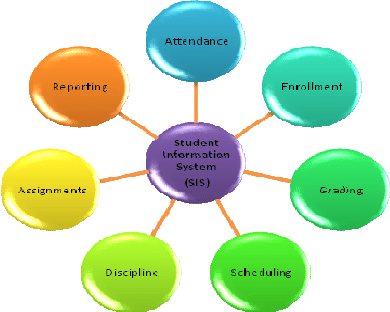Student Information System (SIS) is the frontrunner of this transformation, personalizing learning for each student. This platform simplifies administrative tasks while enriching educational experiences for pupils. This article explains its workings as well as its impact on student learning.
Understanding Student Information Systems
Student Information Systems are the backbone of any educational institution. They perform administrative tasks while providing stakeholders with real-time data. They are important for more than just administrative efficiency. Insight into student performance can transform pedagogy!
Administrative Process Simplified:
Student information systems (SIS) can simplify administrative tasks, and streamline other processes such as enrollment, attendance tracking, and grade management, allowing teachers more time to support and teach their students. It is an online attendance system.
Data-Driven Insights:
Dashboards and reports can be generated by school systems to provide teachers with valuable insight into the progress and performance of students. These reports can be used by teachers to track student progress over time and identify areas of improvement.
Empowering Customized Learning:
A SIS helps educators tailor their teaching methods to meet the needs of each learner by empowering them with data analytics and performance metrics. Teachers can also use detailed reports from an SIS to implement targeted interventions and provide additional resources to improve the engagement and comprehension of their students.
Instructions for Individuals
With detailed profiles of students and their performance data, educators can tailor instruction to each student. By using adaptive learning management software and targeted interventions to create different assignments, educators can encourage academic growth, while increasing student engagement.
Monitoring and Feedback on the progress
A student management system online allows teachers to monitor the real-time progress of students and provide immediate feedback on assignments and assessments. This creates an environment that encourages growth among all parties involved. This feedback loop encourages the development of students by creating a supportive environment.
Fostering seamless communication, collaboration, and teamwork:
An engaging environment is built on communication and collaboration. An SIS facilitates this by a transparent dialogue between stakeholders, including educators, parents, and students. Educators can also use the messaging features of an SIS to quickly communicate important information, such as feedback or assignments, to their students. This ensures timely engagement.
Parents Engagement
Student Information Systems can be a powerful tool to encourage parental involvement. They provide parents with access to academic reports and data. Parents can communicate directly with teachers and provide academic support to their children while remaining informed about their journey toward educational excellence.
Better Communication
A SIS can be a useful tool for facilitating communication between departments and administrative units in educational institutions. The academic advisors and the student support services are working together seamlessly to help students succeed.
Empowering data-driven decision-making:
The core of exceptional education is data-driven decision-making. A student information system provides school leaders with powerful analytical tools to gain insight into school operations, students’ performance, and improvement areas.
By analyzing data on student performance, such as attendance, behavior, and budgeting, administrators can make strategic decisions about staffing, programmatic initiatives, and budgeting.
Curriculum Enhancement:
Educational leaders can use data analytics to evaluate the effectiveness and efficiency of their curriculum materials, teaching methods, and assessment techniques. By identifying improvement areas and aligning them with academic standards, administrators can improve the education quality at their institution.
Enhancing Accessibility and Flexible:
In today’s digitally connected world, access is key. Student information systems (SISs), which offer access to educational resources anywhere and anytime, allow students to access educational materials, submit their homework, or participate in virtual discussions, without losing control.
Remote Learning Opportunities:
A SIS can provide educational continuity in the face of global events such as the COVID-19 Pandemic. It does this by providing remote learning options, allowing students to access educational materials and connect with instructors from anywhere using online platforms.
Self-Paced Learning:
Students can take charge of their education with a SIS that offers self-paced study options. Students can learn at their own pace with asynchronous classes, flipped classrooms, and personalized learning pathways.
Boosting student motivation and engagement:
Academic success is dependent on engaging and motivating students. A SIS can be instrumental in this area, by providing interactive tools, gamified elements, real-time Feedback Mechanisms, and real-time feedback Mechanisms – creating an immersive learning environment that engages students while stimulating intrinsic Motivation.
Interactive Learning Tools:
Interactive tools such as multimedia resources, simulations, and virtual laboratories can be included in a SIS to help students gain hands-on experience that will improve their comprehension and retention.
Real-time Feedback Mechanisms
Quizzes embedded in SIS systems, polls, and interactive assessment tools, allow educators to give instant feedback. This reinforces the learning objectives of students while guiding them toward mastery. Real-time feedback encourages students to participate actively and helps track their progress towards mastery. This fosters a sense of accomplishment in learners.
Conclusion:
Adopting a student information system is a step forward in improving the learning experience for students. An SIS’s transformative power can be felt in many aspects of an educational institution – from administrative processes and personalized learning paths to communication, coordination, and collaboration. A robust SIS is a cornerstone of 21st-century educational institutions that embrace innovation and adapt their programs to meet the changing needs of students. Call iSchoolMaster if you’re looking for the most effective school management system.


